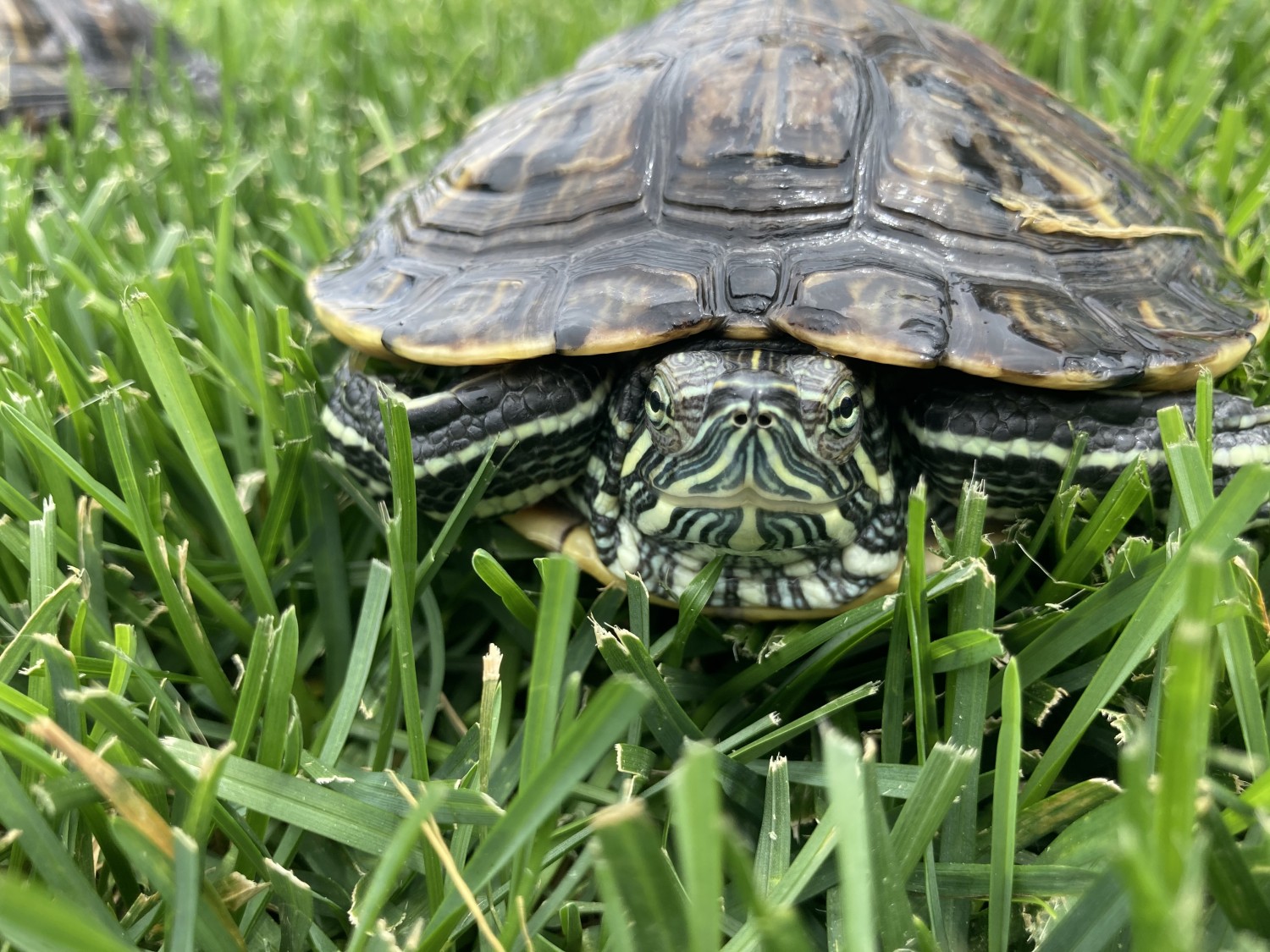

Like many unwitting owners of a red-eared slider, you could be forgiven for just dumping the thing in the river and walking away.
FULL GROWN RED EARED SLIDER FULL

They are extremely flexible turtles, equally at home in a pond like Concourse Lake or in the Delaware River. Look closely, and you’ll see the red stripes on their heads (though really old ones lose their stripes). Most turtles you see catching some rays on rocks in Philadelphia’s waterways are red-eared sliders. Brown, Philadelphia County Coordinator, PA Amphibian And Reptile Survey

The release of exotic species into the wild is a criminal offence under the Wildlife and Countryside Act 1981.Guest post by Bernard S. It also suffers from human pressure as they are used as a source of food, particularly in Asia. While not threatened in the wild, the Red Eared Slider is taken from its natural range to be used in the pet trade. It is seen as a pest in many countries including the U.K., U.S.A and Australia and can outcompete / predate upon native fauna. This is due to its global widespread population and a tolerance of a range of habitats, including degraded areas. The Red Eared Slider is classified as ‘least concern’ by the IUCN. They are vulnerable however, when young, and may be predated by a variety of fauna in their native homelands such as raccoons, skunks, foxes and wading birds.Īdult Red Eared Sliders are unlikely to come under predation from UK native fauna, however their young could be susceptible to foxes and wading birds should they be encountered. In the UK, reproduction in the wild is rarely successful, although egg laying behaviour has been observed.ĭue to the Red Eared Sliders size and thick shell, as an adult they have few predators, apart from alligators or crocodiles. Females can produce up to 3 clutches of 2-19 eggs per year. Three subspecies are recognised: Trachemys scripta scripta, Trachemys scripta troostii and Trachemys scripta elegans. Feed on fish, tadpoles, snails, crickets, and aquatic plants. Almost entirely aquatic but leave the water to bask in the sun and lay eggs.

Individuals found in the wild in the UK thought to be pets that have escaped or have been deliberately released.įound in freshwater ponds, lakes, canals and slow-moving rivers. Abundance and distribution in the UK not well known but numbers thought to be increasing. Native to North America.Introduced into Europe, Africa, Asia and Australia. Older animals become darker with more uniform markings. Plastron (bottom shell) is yellow with dark, irregular markings. Shell usually dark green with light and dark markings. Distinctive red stripe on each side of the head. Tail of male is longer and thicker than that of females. Identificationįemales 25-33 cm and males 20-25 cm in length. There is a need for more data about sightings of these animals to know how many can be found here. Breeding in the wild in the UK is not often successful, but they have been seen laying eggs. This is partly thought to be due to pet owners being surprised by how large the animals grow (young sliders are quite small) and people being unable to keep the creature, so they have released them into local ponds and habitats. Like the European Pond Turtle, this small terrapin species has been released or escaped into the wild from captivity. Red Eared Slider/Terrapin ( Trachemys scripta elegans) Digital Amphibian and Reptile Conservation.


 0 kommentar(er)
0 kommentar(er)
